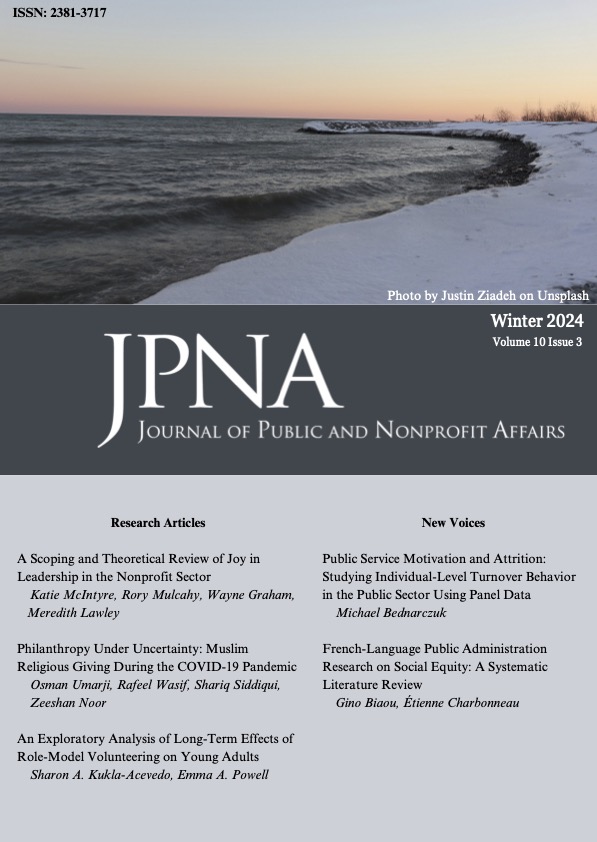Public Service Motivation and Attrition: Studying Individual-Level Turnover Behavior in the Public Sector Using Panel Data
DOI:
https://doi.org/10.20899/jpna.e02zav47Keywords:
turnover, attrition, public sector motivationAbstract
One of the foundational claims of public service motivation (PSM) is that it should influence an individual's willingness to join and remain in public organizations. However, the evidence in support of the “attrition hypothesis” is nuanced, and there is a lack of research examining actual turnover behavior. This study addresses this gap by using longitudinal data from the Youth-Parent Socialization Study to examine the relationship between pre-employment PSM-related values and long-term turnover behavior in the public sector. A multinomial logit model finds that those with higher PSM-related values in childhood are more likely to remain employed in the public sector over time. These results have practical implications for public sector retention strategies, as fostering the development of PSM-related values could lead to reduced employee churn and their related costs.
Downloads
Published
Issue
Section
License
Authors who publish with this journal agree to the following terms:
- Authors retain copyright and grant the journal right of first publication with the work simultaneously licensed under a Creative Commons Attribution License that allows others to share the work with an acknowledgment of the work's authorship and initial publication in this journal.
- Authors are able to enter into separate, additional, contractual arrangements for the non-exclusive distribution of the journal's published version of the work (e.g., post it to an institutional repository or publish it in a book), with an acknowledgment of its initial publication in this journal.
- Authors are permitted and encouraged to post their work online (e.g., in institutional repositories or on their website) prior to and during the submission process, as it can lead to productive exchanges, as well as earlier and greater citation of published work (see, The Effect of Open Access).







